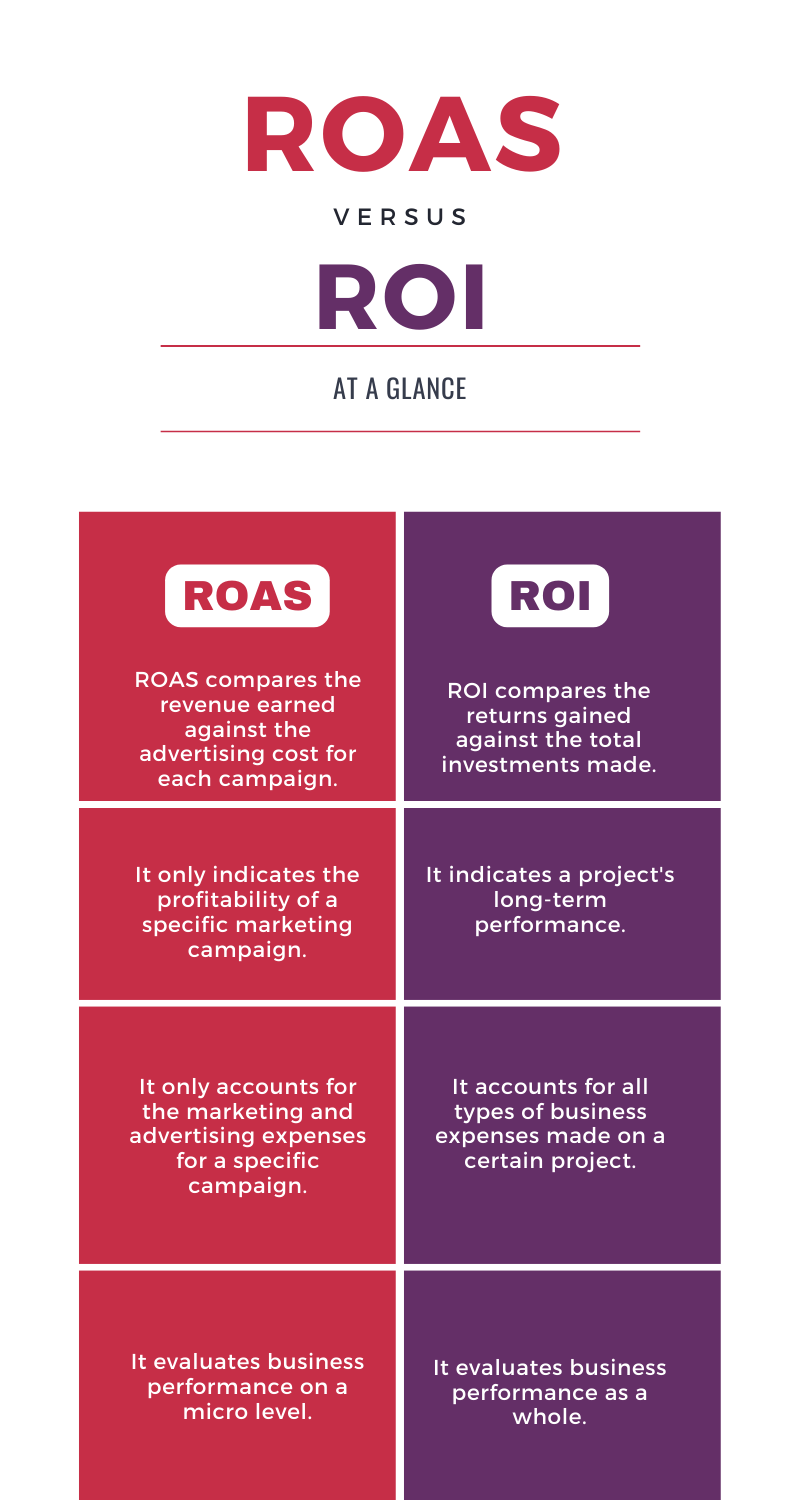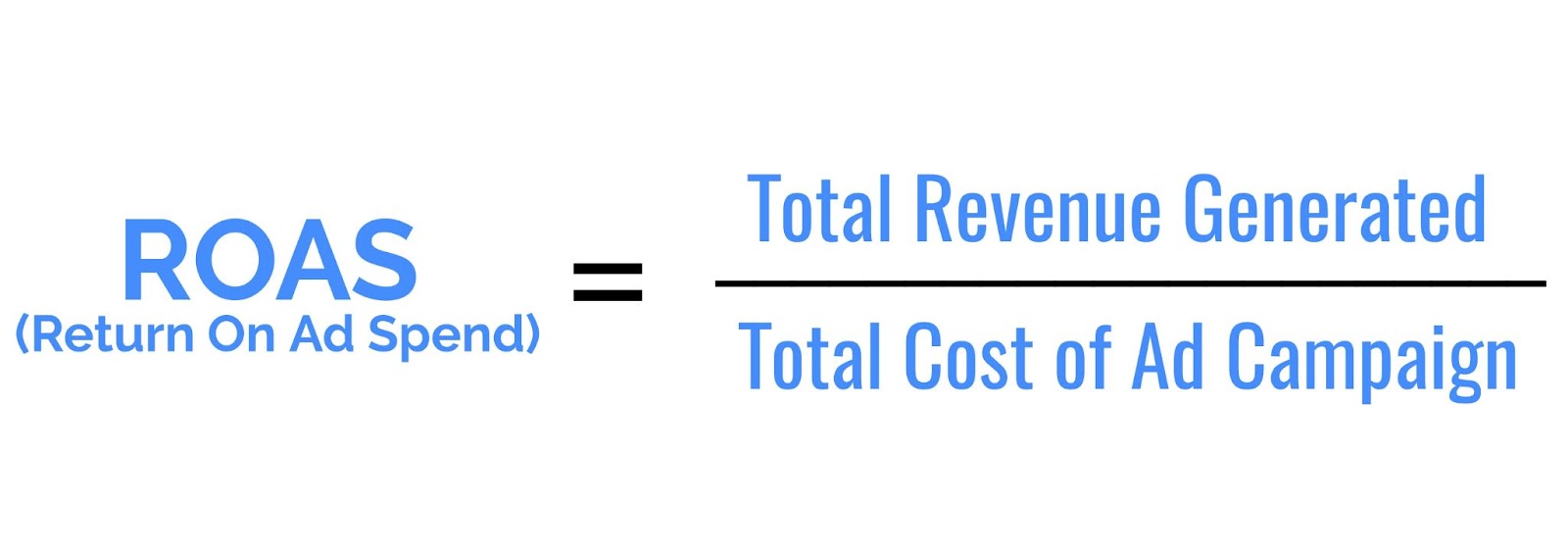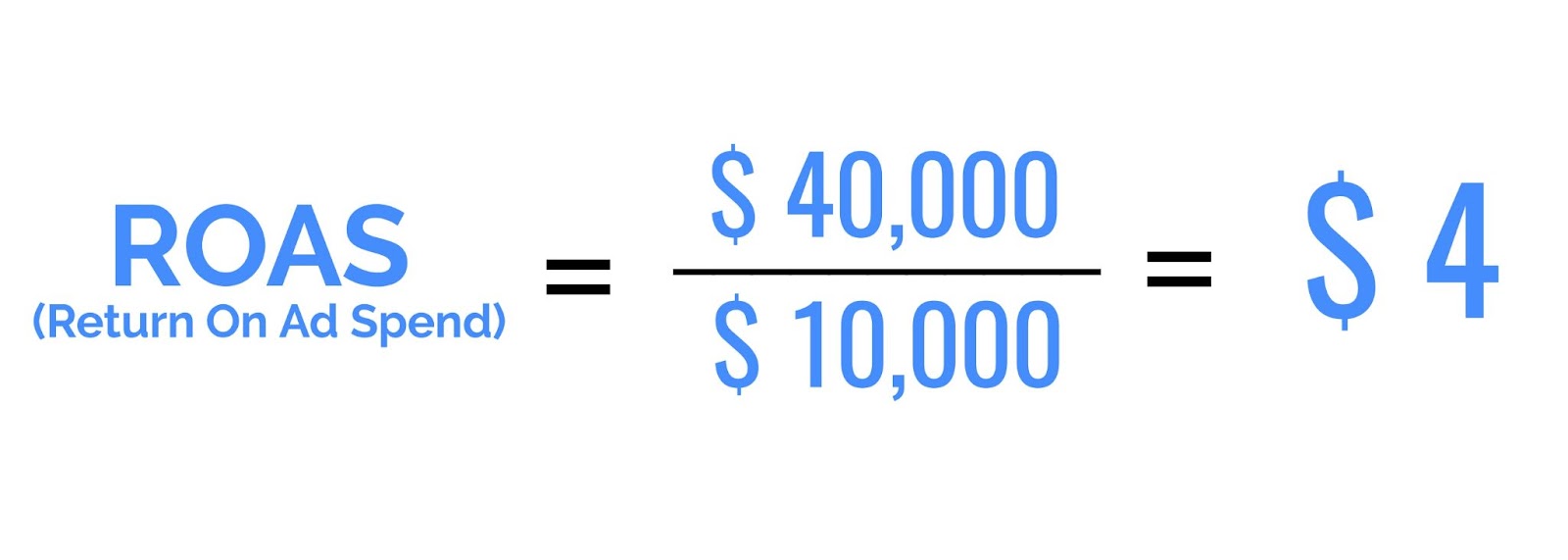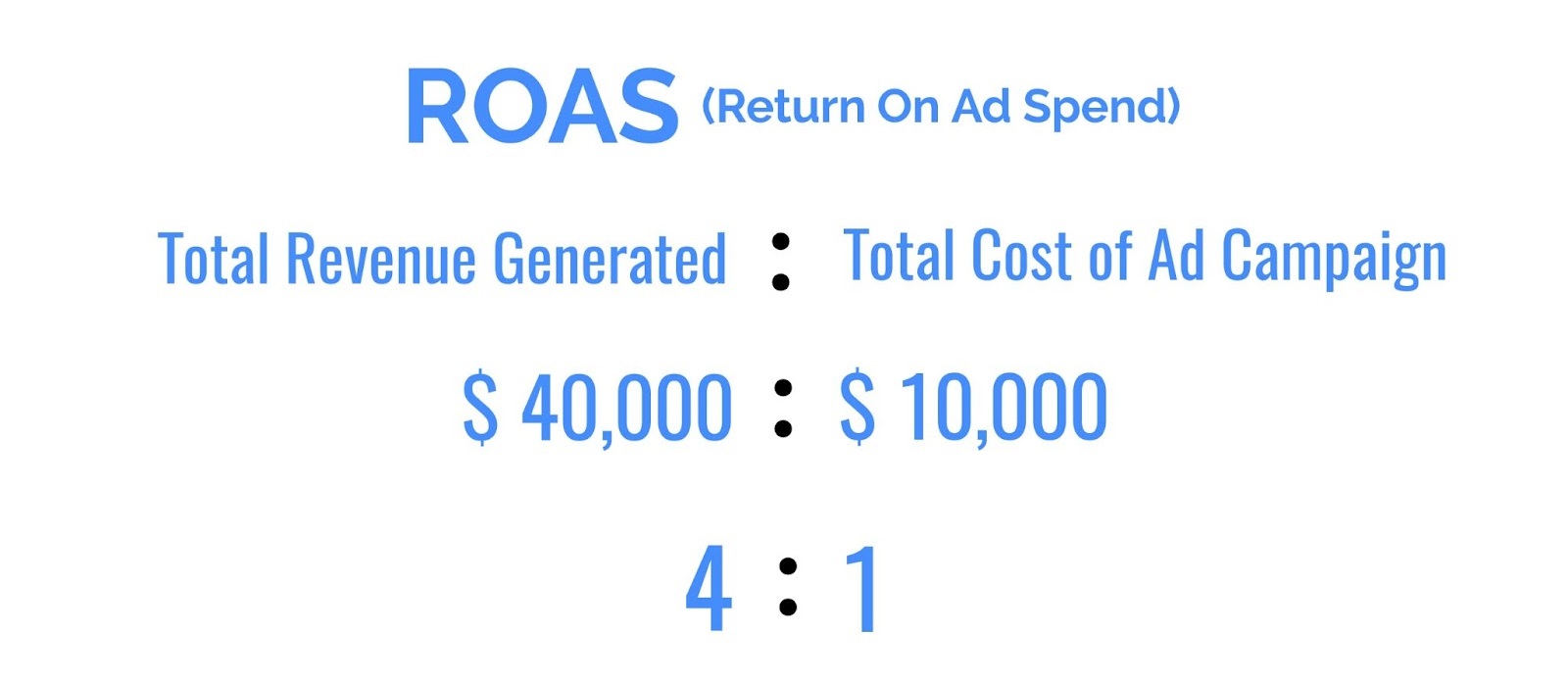As a marketer in today’s competitive landscape, you, of all people, know that running an ad campaign is far from a walk in the park. Aside from the pressure of putting out great ads that tickle your audience’s interest, most of the time, you also have to stretch out a meager advertising budget.
That’s why having an understanding of your return on ad spend (ROAS) is essential for modern marketers. By helping you make data-driven decisions, tracking your ROAS not only optimizes your campaigns but also helps maximize your advertising dollars.
Knowing how to accurately calculate ROAS can help you make savvy decisions about optimal budget allocations and marketing strategies, giving you better results with a smaller investment.
But where do you start? By learning how to calculate your ROAS, of course!
We’re here to let you in on a simple ROAS formula that can help any marketer master their ROAS calculation — no advanced mathematics required! Read on to discover how tracking ROAS can propel your business forward.
Content:
Understanding return on ad spend
Return on ad spend (ROAS) is a metric used to measure the effectiveness of advertising campaigns by calculating the revenue generated from advertising compared to the cost of advertising. It is typically expressed as a ratio or percentage.
A high ROAS indicates that a business is generating a good return on its advertising investment. In contrast, a low ROAS may suggest that the advertising is not as effective or efficient.
When you know how much you’re getting back for every advertising dollar you spend, you can use that data to gauge which campaigns are nailing it and which need to be pulled out. This ensures you’re not wasting time, money, and other resources on an ad that no one wants to see.
What is the difference between ROAS and ROI?
ROAS and ROI (Return on investment) are two important marketing metrics used by organizations to evaluate their ad performances and marketing efforts.
Though the two terms seem to be similar, they are different from each other.

ROI compares the returns gained against the total or specific parts of the investment. It calculates the revenues generated for a certain period in return for the total amount of resources invested.
That said, ROI is a relatively long-term performance indicator compared to ROAS. Unlike ROAS, ROI does not measure the performance of an advertisement campaign against the dollar. It calculates whether or not the whole investment in that particular business decision is profitable.
As discussed earlier, ROAS is the revenue earned against each dollar spent on a specific online marketing campaign.
Like ROI, the ROAS has become one of marketers’ most important KPIs. Contrary to ROI, where a total investment is evaluated for its profitability, ROAS measures a specific marketing effort for its profitability.
While ROI accounts for any or all types of business expenses, ROAS only caters to advertising expenses. ROAS is sometimes more precise than ROI because it can work at a micro level.
Now, let’s jump into why it is so important to have ROAS data at hand.
Why do you need to calculate ROAS?
For any business, it is necessary to have a quantitative measurement of the returns generated against any expense made. You can’t just spend money without knowing whether or not it will yield returns. The same principle also applies to marketing and advertising.
To effectively measure how well your marketing campaign is doing, you need to scrutinize the numbers. It must yield results that can justify the amount of resources invested into the project. This is the main reason why you need to calculate your ROAS.
In addition, your ROAS data helps you gauge the quality of your online advertising efforts. This, in turn, gives you a chance to improve them, thus aligning the direction of your advertising efforts with your business goals.
Also, as a marketer, you need to connect with your customers more effectively. Your ROAS will tell you how well your intended message about your product or service has connected with your target market.
The beauty of ROAS is that you can calculate it at any level of your marketing campaign. This allows you to make informed and timely decisions without any delay or loss. You can simultaneously watch how much you are spending and how much you are getting in return.
How to calculate ROAS
It is fairly easy to calculate the ROAS for any of your marketing effort. It does not involve complex calculations and can be done by anyone, even with little knowledge of math. To calculate ROAS, you’ll need two types of data:
- total revenue generated (from that specific campaign);
- total cost of the advertisement campaign.
Using the above data, you can calculate your ROAS using this formula:

To help you understand it better, let us give you a demonstration.
Let’s suppose that the total cost of your online advertising campaign is $10,000. While the total revenue generated by selling your product or service because of that campaign comes out to be $40,000.
Using the above formula, your ROAS is $4. The calculation looks like this:

This tells you that you get a $4 revenue from each dollar you spend in your marketing and advertising campaign. From that, you can get a quick idea of how well your campaign is doing.
ROAS is sometimes expressed as a percentage. For this, you simply multiply the above formula by 100. Here’s how it looks:

The above percentage tells you that in terms of revenue, your marketing efforts are yielding a 400% return.
ROAS can also be expressed as the revenue earned vs. cost incurred ratio. Keeping the above information in mind, your calculation looks like this:

So, in this case, the ratio is 4:1.
The interpretation remains the same irrespective of the representation of the result. Though, most marketers prefer to express their ROAS data in dollars.
To further elaborate on the concept of a successful marketing campaign with higher ROAS, let us go deeper.
Consider a company, “ABC” that decides to run a marketing campaign to promote its product or service. They did it simultaneously on three different social media platforms for one month. The company spent $10,000 each on these three different social media platforms. The results after one month are like this:

The results show that ROAS of the second social media platform is $5, which is the highest. Hence the campaign on this platform was successful and yielded excellent results compared to others.
Such calculations and monitoring enable marketers to stop spending on low-performing campaigns and focus their resources on better-performing ones.
Other advertising costs to consider when calculating ROAS
Apart from the direct cost of running advertisements on different platforms, you also need to consider other indirect costs related to your campaigns.
If you do not include these additional costs, then your ROAS would be incorrectly higher, thus giving an incomplete and faulty picture of your campaigns.
Below are other costs advertising costs you need to consider when calculating ROAS.
Affiliate commissions
Your marketing team might have engaged some affiliates for marketing purposes. In this case, you need to include the commission or percentage of those affiliates while calculating your ROAS. Including affiliate expenses may increase the cost of total spending on advertisement. But it’s necessary to do so if you want to get an accurate ROAS.
Partner costs
There are certain charges you incur if you use the services of your partners, like your distributors, dealers, agents, etc. These partners help you market and sell your products or services to your customers. Any expenses you incur in relation to your partners are part of your marketing and advertising costs. As such, you need to include it in your ROAS calculation.
Personnel costs
If your company runs an in-house marketing campaign, it also needs to consider personnel salaries and other associated expenses. Remember that this only includes the wages of employees working directly on your advertising campaign. No need to factor in the personnel costs of other departments, such as the accounting or maintenance department, since they don’t directly contribute to your advertising efforts.
Cost-per-click and impressions
The cost you incur for each click made by the audience should also be included in your ROAS calculation. The cost involved in achieving a certain ratio of clicks to the number of impressions served should also be included.
What is a good ROAS?
This question is subjective about what is to be considered a good ROAS. It depends upon the nature and condition of the business. A ROAS from $3 to $5 is considered to be fairly good.
Whether your ROAS is good or not also depends on your business having a profit-oriented strategy or a marketing-oriented strategy. A company looking for more brand awareness may be comfortable with low ROAS.
The definition of a good ROAS also varies with the industry you operate in. Businesses with higher operating expenses and fixed costs may need a handsome ROAS as high as 10:1. But online setups with little operating costs may operate well with a low ROAS of 3:1.
Simply put, a good ROAS is about generating good profits from every advertising dollar you spend.
Simple ways to improve ROAS
Here are four ways you can significantly increase your ROAS.
Target the right keywords
Targeting the right keyword can be a game-changer when it comes to increasing your return on ad spend. By honing in on specific terms, you can direct your ads to a more focused audience who are more likely to become paying customers.
Plus, targeting the right keyword lets you track which search terms lead to better conversions. You can then optimize your campaigns based on these keywords.
You can start by developing a keyword list that covers all of your target markets, including industry-related terms, geographical regions, and locations for local businesses. Then take the time to research each keyword carefully to make sure that:
- they have enough search volume;
- their search intent matches your business goals;
- they have less competition (to lower your CPC).
Set a specific threshold for each keyword’s search volume, conversion rate, and CPC. Then cross out those that don’t make the cut. You should be left with keywords that can help you increase your ROAS.
Get to know your audience better
What do you think can make your audience stop scrolling, click on your ad, and buy what you’re selling? To answer that, you need to know your audience first.
By that, we mean really getting to know your audience. What are their interests? Where do they live? What language do they speak? Do they have pets? Do they live alone? What music do they like? What foods make their mouth water?
When you know your audience like the back of your hand, you can better tailor your message for them. You can create ads that deeply resonate with them and encourage them to take action.
Improve your audience segmentation
No single ad will work for everyone. So if you don’t properly segment your audience, you’re just wasting ad money.
By segmenting your audience, you can create more personalized and relevant ads that are more likely to resonate with each group. It can also help you optimize your ad spend by focusing on the segments that are most likely to convert rather than wasting money on ads that are unlikely to be effective.
Assess your user’s journey
If you will see your ad, will you click on it, or will you just ignore it? You see, if you yourself won’t be interested in your ad, your audience will most likely ignore it too.
So to improve your ROAS, it helps to put yourself in your audience’s shoes. Assess your user’s journey at every step. See if your message resonates with them, and if it does, move on to your landing page. Is it optimized for conversion? How about your checkout page?
Evaluating your user’s journey will help you identify bottlenecks and opportunities for improvement in your sales funnel, leading to better conversions.
Wrapping it up
For business owners, understanding ROAS is a critical component for successful marketing and advertising campaigns — but it doesn’t take a lot of mathematics to get it right. All you need to do is get familiar with the formula and associated metrics that go along with it.
With just a few simple calculations, you can figure out how to make smarter decisions about budget allocations and marketing strategies that not only yield successful results but also provide greater insight.
Of course, it’s also important to note that many other factors come into play when measuring success — such as engagement of customers post-purchase and price elasticity. So while ROAS can tell us one piece of the puzzle, it isn’t the only puzzle piece we need to be considering.








